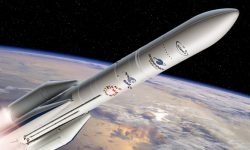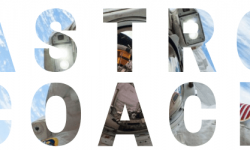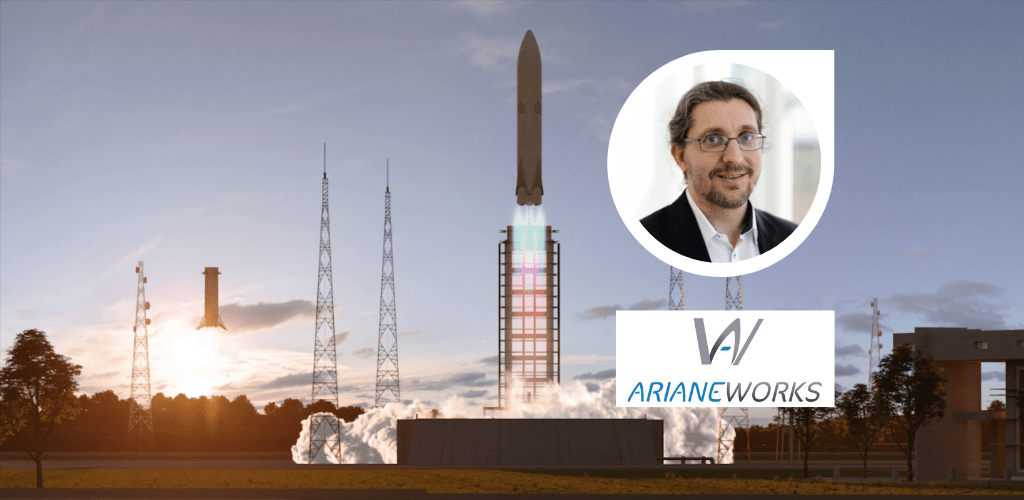
Jérôme Vila leads ArianeWorks, the entity charged by CNES and Arianegroup to imagine and prepare the future European launchers ! Jérôme tells us about his career, the goals of ArianeWorks and projects carried by the initiative. Then he answers your questions and delivers us his Top 10 for space enthusiasts. Ready to take off ?

Jerome, can you introduce yourself and tell us about your journey, from the birth of your space attraction to your current role as ArianeWorks leader ?
I have been interested in space for a long time, but for a long time I did not get involved in this topic. As a child and teenager, I was a space enthusiast. I remember that I subscribed “Air & Cosmos” when I was a teenager, when it was not really a magazine for teenagers. Space was a very inspiring topic for me, thanks to science fiction and space news.
Curiously, I lost this attraction for space when I started my engineering studies. At that time, I asked myself many questions about what I wanted to do, without necessarily finding an answer. I joined a generalist engineering school, with a specialization in complex systems, the term used at the time to talk about artificial intelligence. The space field came back in my life when I did internships.
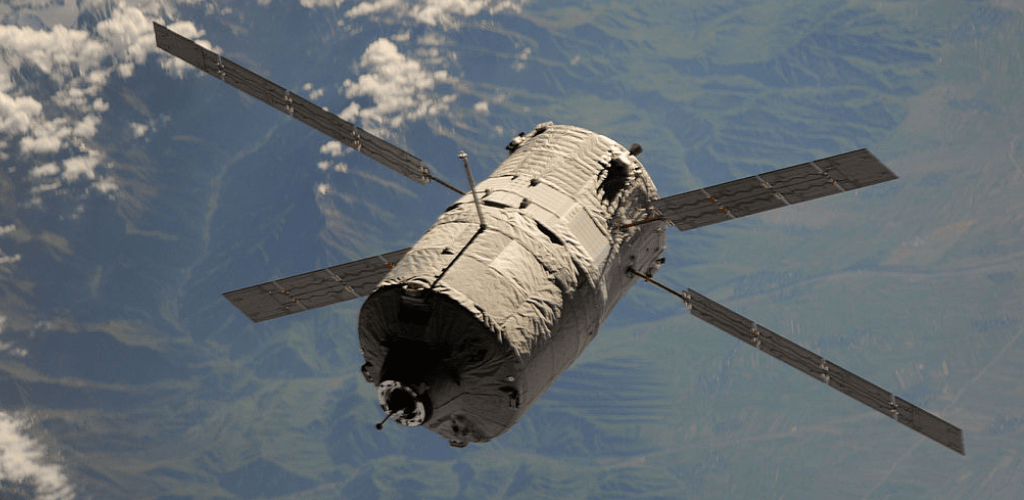
I did a first internship at DASA, in Bremen, Germany, today ArianeGroup. This company was working on the ATV (note : European automatic transfer vehicle supplying the international space station). It made me want to deepen my experience in the space industry. I did an internship at Aerospatiale, now also ArianeGroup, in Les Mureaux, near Paris. Then I joined CNES (French Space Agency) as a contingent scientist, which is a lighter version of military service for people in the scientific community. I really enjoyed it, and CNES recruited me. This is how I reconnected with the passion of my youth !
It’s been a little over 20 years since I worked on rockets. I have spent my entire career at CNES, with a short but interesting parenthesis in a project of the European Space Agency. My career can not be more classic. I started with a technical job, performing calculations and analyzes in flight mechanics : takeoff, stage separations and also atmospheric reentries on Ariane 5. At the time, I fully worked on the development of Ariane 5, that’s a milestone my professional background.
Quite quickly, I was asked to lead small project management functions. In this way, I supervised the Ariane rocket fairing, designed by RUAG in Switzerland, as well as the observation of the return of the main stage of Ariane 5 during launches. It was amazingly interesting, motivating… and exotic ! According to the missions, the return of the main cryotechnic stage is located off Mexico or the African coast. You wait in the middle of the Pacific, you have calculated precisely the trajectory corridor of the rocket stage, you have brought a plane with instruments on board and exceptional pilots (including an astronaut !), you ensured an operational coordination in real time with Kourou to specify the landing area, and that to the nearest second the luminous point signaling the atmospheric re-entry illuminates in the sky… The power of mathematics has something a magic !
Then, I devoted myself entirely to project management : first system engineer on the end of development of “Ariane 5 ECA”, the version of Ariane 5 that flies today. Then after the first successful flight, I managed the entire project to its end : the pre-industrialization phase where we have to move from prototype to mass production.

At ESA, I enjoyed assuming the role of Technical Officer in the first integrated team between ESA and CNES, which was working on a final variant of Ariane 5, “Ariane 5 ME”. This version was not launched, so as to accelerate the launch of Ariane 6. The stop of a project is always a moment of frustration, but the reasons were understandable and the quality of our work was not the reason of this decision. Many of the ideas that we initiated were subsequently extended for Ariane 6. I also remember that in this period I met wonderful and exciting people, friends – including Aline Decadi whom you interviewed – as well as the value of the multi-cultural experience between two entities who were not used to working together so closely. This inspired me for the future, clearly.
Then I returned to CNES to reorganize the “Future and Innovation” sub-department with some ideas to remedy some of the historical shortcomings of the Ariane ecosystem, and also to work on a strategic vision beyond Ariane 6. Several projects arised during this fertile period : the very low cost/reusable PROMETHEUS engine, the reusable CALLISTO demonstrator, the KASSAV autonomous backup kit… This experience lasted 4 years, until the launch of the ArianeWorks initiative last February, which was precisely part of the panel of “ideas” deserving at least an experiment.
I quickly decided to apply for ArianeWorks. When we do a little benchmarking on this type of entity, one of the success factors is to associate individuals who can, through their background or their rank, provide legitimacy in front of hierarchical or procedural organizations that the we will necessarily jostle. I thought I could be useful in this initiative. And I must say that it also deeply fit to my personality, a certain taste for transgressing the borders, here by extending the relationship of trust and respect that I have been cultivating for 20 years in the course of our common adventures with ArianeGroup engineers . The “Ariane family” spirit is in all of us.
Could you please introduce ArianeWorks ?
ArianeWorks is a somewhat hybrid entity, without direct analogy and difficult to confine in a single formula : both public and private, operating as a start-up while not being an independent company, New Space while being supported by very experienced and specialized teams. Its mission is to prepare future generations of Ariane with audacity and inspiration, by accelerating some key technical projects, mobilizing new collaborations and opening new paths. Among the key projects that we carry, the central subject is named THEMIS. It is a low cost and reusable rocket stage demonstrator that could be described as “2nd generation”, and which should be an essential asset in Ariane’s future architectures.
In my job at CNES, I’ve necessarily met a lot of New Space companies and people, so I’m measuring the real value of new ideas and new ways of doing things for future generations of space projects. But I also measure the limits of this model when it comes to the achievement phase. Because it is not enough to be three people in a garage to deploy a useful space object… It is still a sector that requires a lot of resources when it comes to the achievement phase and is technically very demanding, sometimes flirting with limits of physical knowledge.
ArianeWorks is the best of both worlds, both New Space and Knowledgeable Space ! We have the mindset or the dynamics of a start-up in our internal way of working (we work in an open space, which is a real hive where ideas arise and end up on the wall, we easily establish fertile cooperations apart from our traditional ecosystem…). We are what we call in the aerospace sector a “Skunk Work” : a commando unit of engineers whose mission is to trace a faster route. ArianeWorks is the mix of it all !
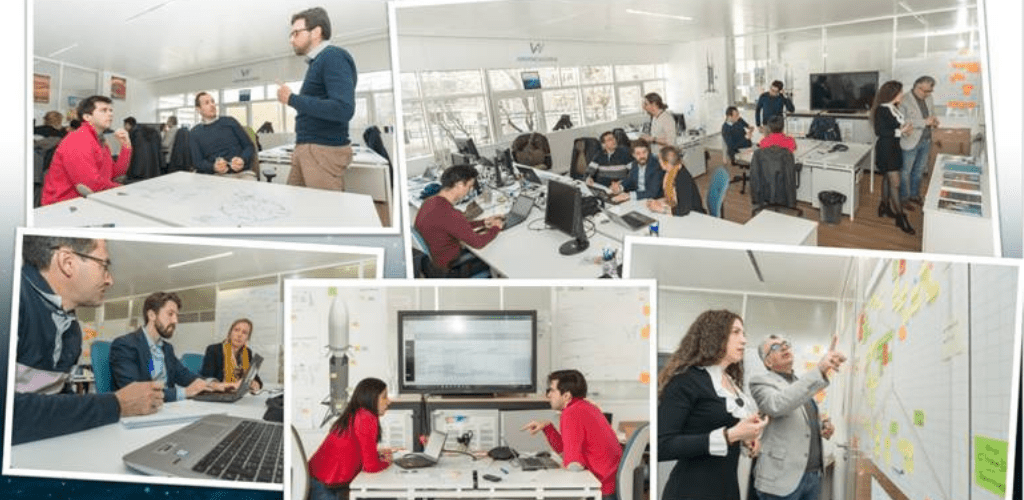
The ArianeWorks initiative was matured a year before it was launched. During this period, we asked ourselves in particular about the best link between this entity and CNES / Arianegroup, so that the initiative brings its full potential. And we made the choice not to create a separate legal entity, because the formula of “free association” that we have today was the most fertile. Our headquarters is therefore physically “outside the walls”, located in the 15th arrondissement in Paris, but we maintain an organic and particular link with the other CNES and ArianeGroup teams.
Part of our strength is precisely this exceptional relationship with the back office, because it allows us to move quickly from idea to action. For example, if an idea arise regarding an original concept of rocket recovery, I can call CNES or Arianegroup to trigger a study to deepen the intuition with the best experts, then move very quickly within ArianeWorks to deal a prototyping contract. This agility is possible only because we cultivate this proximity while keeping our freedom and a touch of impertinence. It’s a question of balance.

The ArianeWorks initiative was launched at a unique moment. Ariane will take an essential step with the launch of Ariane 6, while celebrating its 40th anniversary this year. 40 years old is often a special milestone in life, a moment of reflection and projection. ArianeWorks’ mission is useful in this context, to inspire and prepare the future horizons of this great European history. As I said, ArianeWorks’ idea was matured for years, and the entity took shape last year. This is not an isolated and improvised project, this project comes from far away, its launch has been carefully thought out, and we are deploying it at a chosen moment.
Tell us about the impact of the launch of ArianeWorks for CNES and Arianegroup, and your work methods ?
Often, when I introduce ArianeWorks, I try not to talk only about technological topics and to insist on the management dimension. Behind the projects that ArianeWorks commits, there is also the search for a cultural transformation of our ecosystem, of the various actors or manufacturers that are involved on Ariane. In our situation, it is about changing our angle of view, about coming out of our historical top-down pyramidal approach, which is having a very precise idea of what we want to do in 15 years and roll out the retroplanning to organize the technical projects. This approach, very effective when you know where to go, can not work in a time of uncertainty or creativity.
We do a lot of work on ourselves, then evangelize the adoption of agile approaches in the project management, or even very modular architectures in the products we imagine. And people understand and follow us : engineers are smart people ! Other industries such as the cars industry since the 1990s have totally changed their way of working, with cases and engines interchangeable between models and which are recombined in models to have short cycles of 2 to 3 years. These same reflexes also happen in aeronautics, and the world of software for its part has always worked like that.
Agile development approaches, which we are experimenting with on the ArianeWorks platform to go very quickly to concrete achievements, remain very counter-cultural in the space industry. In the space industry, we often talk about the “V cycle” : I have a precise idea of what I have to do, I divide it into manageable sub-problems, and at some point I am at the bottom of the V. I validate each of the subproblems, and I recombine them in the final system which must be near-perfect the first time. This is extremely effective in managing the extreme complexity of large projects, but it requires a very accurate picture of what you want to do from the beginning of the development cycle.
At ArianeWorks, we do not want to determine an architecture, we do not want to close doors too early, we have the duty to remain flexible. We rather reason in small steps to very quickly have material achievements and enter a cycle of “test, learn and modify”. We will test necessarily imperfect things, learn and improve by successive iterations towards a final product. The path may be longer, but it allows you to gain experience and ultimately, it brings value.
To move from theory to action, we must also recruit people who have the right mindset. In the job description, we wrote that we were looking for “corsairs” ! That means people who know how to get out of the frame when they think that it brings value, people who have had original courses… One of us worked in the Formula 1 industry, another in the venture capital, and there is obviously not only engineers in the team. This mix of cultures makes the ArianeWorks collective naturally fit to work differently.
We are also supported in many of our actions by Hello Tomorrow, a very active association in the Deep Tech community, the future nuggets of the industry. They help us to identify entities or people that are useful to our projects and then to collaborate as effectively as possible. This allowed us to reach companies with whom we will test original things !
Which ArianeWorks projects will be launched in the coming years, and why focus on these particular projects ?
To fully understand ArianeWorks’ strategy, we need to take a step back and be aware of the issues facing the space industry today.
For 2025-2030, ArianeWorks’ strategy comes from the discussions that took place in 2014, when the Ariane 6 development was launched and when I took over the “Future and Innovation” sub-department at CNES. We wondered about the values that had to be projected beyond Ariane 6. This kind of thinking was not very natural at CNES, we are quickly absorbed by everyday projects. There was a big project, Ariane 6, which absorbs 80% of the energy. In this context, we can quickly forget to plant the seed of the next generation. It was my obsession !
We needed to think to initiate the work on the next generation of launchers because the space activities will be influenced by the conjunction of several factors. First, the format of satellites or the space economy evolve considerably beyond historical models. For 40 years, Ariane has lived on a relatively constant paradigm : launching on the one hand the public missions of Europe, then on the other hand geostationary satellites of telecommunications (broadcast TV). This economic model began in 1982-1983, lasted 40 years and is still globally dominant.
But this model has to be reviewed because broadcast TV is not necessarily growing and because different ways of using space are emerging : satellite constellations and markets around Earth observation, for example. Space is a tremendously efficient tool for collecting data on a global scale, typically images. This usage is generating much more space applications than in the past. Rockets must be able to adapt to this new variety of space missions.

Second destabilizing factor, new private or semi-private entities have appeared in the microcosm of space launchers, formerly exclusive prerogative of the states, and important approaches and rhythms quite different from the traditional players. This forces us to rethink our position. For example, the Chinese space sector is very active. It’s not just the United States, with SpaceX or Blue Origin ! In China, there is Landspace, OneSpace, Linkspace… The launch of a first stage of a rocket by the Chinese private company Landspace in October 2018 symbolizes this phenomenon. The video of this launch was recorded by a Chinese private micro-satellite ! Capturing this video is a technical feat that is a signal : something important is happening in the Chinese space industry. All this forces us to wonder about ourselves. That’s not about simply reproducing or prolonging Ariane’s story, but about injecting a new breath into it.
With this ambition, we have therefore tried to propose technical and organizational foundations. On the “technical foundations” side, the work horizon has been named Ariane Next, without freezing a precise image of what it will be. In reality, multiple concepts for Ariane Next are evaluated, but we do not want to close doors at this stage : it is about investing in the 2020s in opening technological capabilities, which can ultimately be integrated into different architectures, for example in rocket probes or an Ariane Next the size of Ariane 5, perhaps in modular boosters…
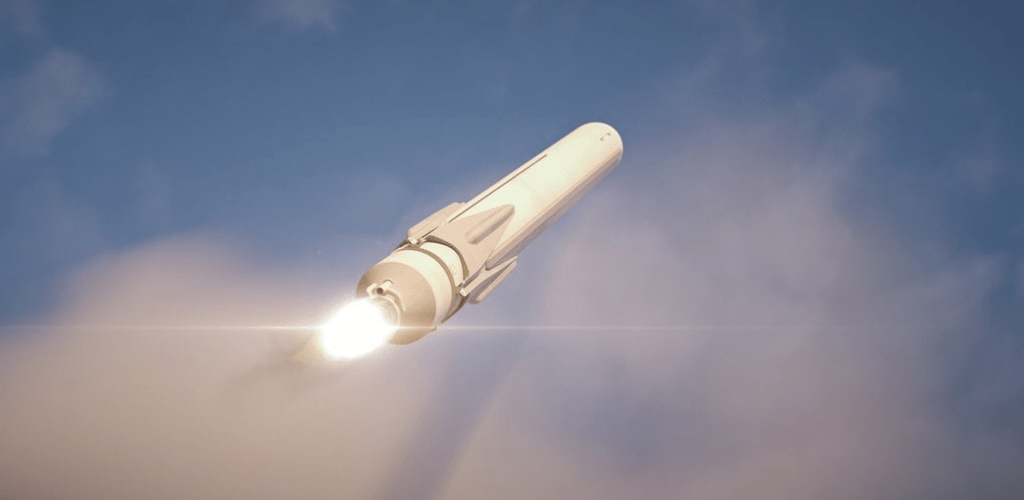
The first of these technological capabilities is PROMETHEUS, a next-generation engine that is ten times cheaper than the Vulcain engine for almost the same thrust, reusable and highly flexible. This project was initiated in 2016 and is progressing remarkably well, with tests of subsystems underway and engine tests integrated in 2021. In the same state of mind, France, Japan and Germany have joined forces to launch the design of the reusable experimental vehicle CALLISTO, which is currently in what we call the “B phase” of preliminary definition, and which will make its first flight campaigns at about the same time.
Finally, as a logical extension of these two investments, we are launching the development of a low cost and reusable stage equipped with PROMETHEUS : THEMIS, which is the central topic of ArianeWorks. THEMIS feeds on the achievements of PROMETHEUS and the technological experience acquired on CALLISTO, and looks like a quasi-operational first-stage rocket prototype.
PROMETHEUS, CALLISTO and THEMIS are the three big projects visible around ArianeWorks, but there are also smaller projects that we do not necessarily talk about. But we have the same philosophy : to create open, modular, multi-scale technological capabilities that will be combined very late in a system architecture, when development will be necessary, but which will be very fast.
And in a more distant future ?
Anticipating what the space sector will be beyond the 2030s is rather part of public sector missions, CNES for example, because the profitability in a 40 years prospective is uncertain, so industrial actors do not spend time thinking about it. On the other hand, there is a strategic direction to imagine and organize, and that is clearly our creed. We engage in collaborative forward-looking work to capture what the needs, expectations, and challenges of society might be, and then imagine how the space sector could contribute to these issues. The Spacibles prospective think-tank, led by CNES, is part of this reflection. This group brings together space players but especially other sectors such as from Smart City, Energy… and produces targeted analyzes on the space sector. It’s a think-tank that moves ideas and inspires us a lot.
Generally, these initiatives build their work on mega trends : we certainly do not know what will be the satellites of 2040, but we know that energy, resources, overpopulation, urbanization will be central issues in society. Our job is to put space at the service of the new challenges of the society and the challenges that humanity will face very concretely. More than going to occupy Mars. On this basis, we imagine what future space activities would be useful and desirable, and how we will need to access the orbit to make them possible with future Ariane.
It’s not just an exercise : as engineers, we try to embody these reflections in concepts that help orient or focus long-term technological research. A bit like the concept-car in the car industry. Unsurprisingly, the first breakthrough relates to propulsion. As long as we do not change the paradigm on chemical propulsion, that is to say oxidation-reduction reactions combining two molecules in a controlled combustion, we will make a more or less sophisticated refinement of the historical state of the art. But we will not cross a fundamental course ! We work in laboratory on technological breakthroughs for high power propulsion, on new molecules that trigger this paradigm shift.
Beyond this example of propulsion, this same approach is deployed in each of the engineering fields implemented to access space : hyper-light structures, intelligence on board, complex piece manufacturing, etc. Then all this is recombined in a concept, with imagination and work. This architecture allows to rethink a global launch system, its form or its operational concept, and to put into perspective the potential of these possible breakthroughs on the long term.
Space Lovers’ questions to Jérôme Vila
How the reusable Ariane launchers will be different from reusable launchers of other space players like SpaceX ? (Rocket Manny on Facebook)
We are often asked this question ! There are similarities and differences. When working on reuse as a potential axis to save money, some concept drawings may look like a SpaceX’s Falcon launcher, just as Boeing 737s and Airbus A320s can look alike. Physics is the same for everyone, so objects often look the same. However, they can be very different in functionality and efficiency.
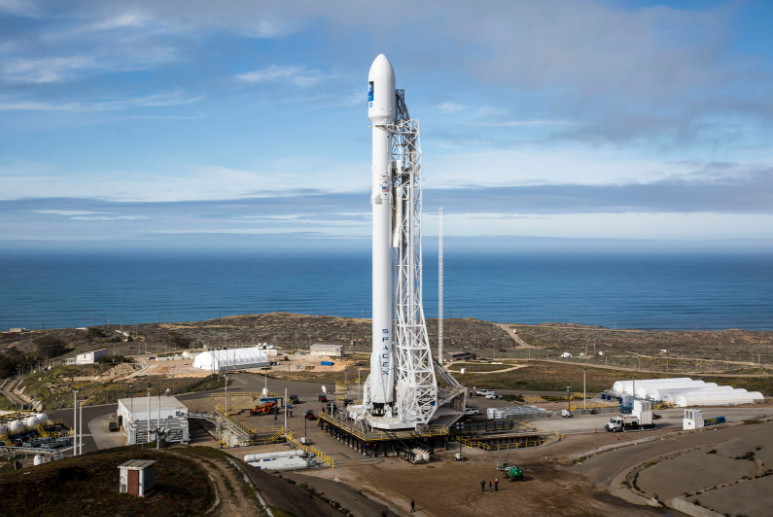
We actually see THEMIS as a work on a low-cost, reusable, second-generation first-stage. The first-stage created from THEMIS will be reusable, but with technological and economic improvements accessible during the next decade.
For example, we are working on manufacturing 4.0, that is to say on how to automate production, controls or operations beyond current practices. Keep in mind that ArianeWorks is developing low-cost and reusable capabilities, in that order. That is not because a launcher is partially reusable that it is expensive. The coming launcher generation benefits from the progress of the manufacturing industry the recent years. Technological bricks born in the automotive industry are currently coming into the aeronautics and space industries. This has a significant impact on the design of THEMIS, even if we canno’t see it when we look at the external shape : architectural choices are made for manufacturing and around these new possibilities.
Other technologies will mature in 2025. These technologies will bring flexibility and value. As another example, we are working on a totally wireless avionics. Today, miles of wiring are needed inside the launcher, and the connection between the ground and the edge or between stages is managed with detachable electrical connectors. We believe we are on the right track to switch to wireless sensors, wireless communication buses, and wireless links between stages and between the launcher and the ground. This brings a great flexibility of configuration or operation, while saving weight and costs. Installing the cabling represents very significant integration costs.
And so on, the list could grow : the implementation of the oxygen/methane pair with a local production of biomethane, the operations that will use robotic capabilities to simply manage the security constraints, the recovery mode of the stage that might be different, etc. The methane and robotics industries are excellent in France !
Another difference : our economic strategy is probably quite different. Because it has to be adapted to our scope of action : we do not have the NASA or US military markets to fill order books and support an economic model. Europe deploys fewer public space missions, and moreover, there is no obligation to fly on a European launcher, unlike what happens in the United States. For these reasons, we work on scenarios optimized differently, in terms of performance, size or operational concepts, which are more relevant for our own situation. We must be smart and keep in mind that reuse is primarily for lower launch costs.
Ariane launchers projects seem to be catching up with SpaceX for reuse. At the same time, SpaceX is developing the Starship/SuperHeavy, a heavy launcher capable of simultaneously launching satellites, traveling towards the Moon or Mars, and fastly traveling between two terrestrial sites. Is it a threat to Ariane? What is the vision of Arianegroup and Europe Space to cope with this evolution? (SpaceXRaptor on Reddit)
SpaceX should be asked why they are making a Starship, and then make a distinction between what they communicate and why they really do it. Clearly, we do not have the same analysis on the desirability and the interest of developing a super-heavy launcher. Our priority for the next decade is Earth. Space applications that are useful for the most urgent challenges – climate, security, global connectivity… – do not call for exceptional capabilities, but expect a sharp reduction in mission costs to develop. And even for the most complex infrastructures like today the ISS or tomorrow the cislunar space station LOP-G, it could be more relevant to combine medium launchers with capacities of transport in space, with space tugs for example, then assembly techniques in orbit. Developing more modest capabilities, smartly combined in a space logistics network, seems to us more interesting and above all more flexible than to bet on a giant spacecraft.

We do not have the same strategy. I imagine Elon Musk is developing the Starship primarily to serve his will to go to Mars. It’s the right spacecraft size to make a SSTO (Single Stage To Orbit) in conventional propulsion, and it’s an interesting step for its Martian strategy. As for passenger transport “point to point”, it is a difficult market, especially with such a complicated product. And studied extensively in the history of aeronautics. In my opinion, there are other “point to point” adventures a little more credible in the landscape and I do not think that the “point to point” market justifies to develop the Starship.
Our priority is to serve the needs of the Earth in 20, 30 or 40 years. Humanity will not migrate massively to Mars before long. This is not a great holiday destination, it’s a bit like offering a colony on Antarctica : it’s interesting scientifically but we’re not going to implant humanity easily. In the next few decades, the space sector is above all a formidable tool for responding to problems on Earth. We are therefore focused on this time scale. Faced with these problems, we do not see the interest of developing gigantic architectures. But all the engineers dream of developing a giant spacecraft !
Ariane is famous for its high reliability thanks to more than 100 Ariane 5 flights. ArianeWorks communicates about adopting a new philosophy of “controlled risk” for more agility, but what does it mean concretely ? Shorten test periods, fewer tests, or other ? (Jblomen22 on Instagram)
“Controlled risk” does not mean fewer tests, on the contrary : it means more tests, but going tickling the limits. And to assess the limits, sometimes we have to go a little too far. We have talked about cultural change. For a long time, we had to design products that were “right the first time”, because the costs in the final development are huge and there is no real possibility to test the entire system before a real operational launch. That means you have to do the perfect thing the first time, otherwise it’s a drama. And we have known a few.
When success is forced, the engineers approach becomes extremely cautious, which is very good in some cases, but it does not allow to be very open to innovations that could pay off. Because any change is a potential risk. When I was project manager on the Ariane 5 launcher, I was very closed to innovation ! All the new ideas that were offered to me and that were not essential, I dismissed them because my job was to make sure that the launcher is ready at the right time, with the intended performance, and reliable. It was a very closed way to work.
With ArianeWorks, we want to break this culture a bit and have a more adventurous approach. We are not developing Ariane 7, we are not condemned to succeed. We work voluntarily on a demonstrator, a prototype, which gives us a great space of freedom to experiment, test and go beyond what our traditional culture would have pushed us to do in an operational development. The wireless avionics we talked about before are actually mature for several years. But it was not possible to implement it on Ariane 5 that was designed in the 1980s, and the transition was too risky to embark on Ariane 6 which was to be developed imperatively in 5 years. If we continue like this, we will never make the switch to wireless avionics : it is to cross this course that demonstrators like THEMIS are useful.
When I speak outside, it’s also for my own engineers. We will take more risks on prototypes, objects that do not put at risk Ariane if they encounter difficulties or delays. The “controlled risk” means that we must take more risks than in the development of Ariane rockets. Now is the time to test and embark on many innovations for the next generation. In an agile approach : to do more tests and send more quickly prototypes to the test. We will spend less time studying, and sometimes on an intuition, immediately go to manufacturing, or push the tests further than we currently do. And I must say that the intuitions of our engineers are rather clever.
For example, it has been a long time since we broke engine on the test bed ! It’s good to be the perfect student when you’re at the end of development, like Ariane 6. But when we break an engine, as our competitors have done in recent years, we learn a lot. I remember that during the development of Ariane 5, faced with complicated physical issues, it was valuable to study the data from engines we broke in test in the 1970s because it was in those moments that we had learned the most.
How will Arianegroup communicate about the testing of its new launchers during the 2020s : in a very spectacular way like SpaceX, or in a more confidential way like Blue Origin ? (AstronautHopeful on Facebook)
It will not be an absolute secret as Blue Origin does, simply because our funding is public, unlike Blue Origin that Jeff Bezos sponsors up to $ 1 billion a year on his personal fortune from Amazon. We will be both more transparent and more economical, communicating regularly on our achievements, and even on modest projects that punctuate our work. Hopefully, this interview is an illustration of it, but you will also hear about small-scale trials like the Frog vehicle, which will be used for some “sandbox” ideas. Communication is naturally part of CNES, which is my employer. Obviously, we can be sometimes more discreet on some technological subjects to not be disadvantaged. But we will eventually unveil them later.

Jerome Vila’s Top 10 for Space Lovers
A place ?
This will surprise you : the city where I live, Vitry-sur-Seine in the Paris region. It is a historically communist city and curiously very focused on the spatial imaginary. There is a shopping center and a Yuri Gagarin pool, a Sputnik model in front of the Leclerc supermarket, a Space residence… There is even a pastry chef who makes layer cakes in space shuttle shape of more than 2 meters high (Click here to see it) ! He loves the space news and every time I buy macaroons we talk at length. There is finally a lot of street art, graffiti artists are inspired by rockets, cosmonauts… When I come home at night, I’m not homesick !
An experience ?
“L’Exoconference” by Alexandre Astier is amazing ! Erudition, humor, space : it’s an irresistible cocktail. I love this meeting between culture, society and my professional activity. I did not have the pleasure of seeing it live, I watched it on video. But I dream to see him live ! Unfortunately, I think that Alexandre Astier has moved on to another project since L’Exoconference…
A famous person ?
Difficult to choose only one person !
First of all Buzz Aldrin, because it’s his year with the 50 years of the first steps of Man on the Moon. He is a crazy man, quite unpredictable !
I would also like to talk about Professor Blamont, one of the creators of CNES, who manages to cheer me up with fresh ideas even if he is 92 years old. He continues to come to his office every day “except Tuesday, I am at the Académie des Sciences” as he says ! He also accompanies the initiative “Federation” which is the link with the amateur space-enthusiasts, including Makers.
Finally, I am really impressed by the talents of the generation that is currently coming in the space industry, that I discover in start-ups, schools or in the Space Generation. Without isolating one from all those who come to my mind, I can tell you that they will be better than my generation, and that I place a lot of hope in them. That makes me optimistic !
A book ?
“Spaceships” by Ron Miller, released in 2016. I bought it immediately. It’s a beautiful book with spaceships from the 19th century to the present day. It’s both interesting, inspiring and a great journey into the imagination of generations of engineers who have focused on space travel. There are many treasures in this book. It was my bedside book before I brought it to the ArianeWorks headquarters, where everyone can flip through it looking for new ideas
A game ?
The Elite Dangerous video game occurs in an incredibly big universe. It’s very applicative, you meet people, you have activities… It’s a very nice game, but in the end for me it was a bit like starting a new day of work : I started to wonder why I payed to spend my evenings mining an asteroid…
A movie ?
2001, A Space Odyssey and Solaris, by two geniuses of the cinema (Kubrick, Tarkovski) 50 years ago. In these movies, they develop in their own way a reflection on existence, through the space adventure. I am absolutely fan of these filmmakers.
A series ?
Battlestar Galactica (the 2000s version). I was stuck with the wonderful and philosophical dimension of this series, so different from what had been the “cheap” version of the 1980s. The human adventure is incredible. The spaceships are not particularly realistic, but it does not matter ! I still have shivers.
A music ?
CNES is building a “Space playlist” that I recommend, via social networks. For my part, I voted for a set of French Touch albums around the space theme : Miss Kittin (Cosmos, Playing with the Stars), Air (The Journey to the Moon), Hugo Kant (Out of time) ), Daft Punk (Discovery) and M83 (the Interstellar soundtrack).
A project with great potential ?
I have a particular sympathy for space projects that put technology at the service of the challenges humanity will face in the coming decades : the climate, energy, the scarcity of resources. For example, the Copernicus program, which continuously measures the parameters used to diagnose the climate. It’s a doctor at the bedside of the planet ! There are also Japan’s projects on the theme of clean and sustainable energy, such as Space-based solar power. These are the things that appeal to me.
A country to follow ?
China and India, in a form of local and global rivalry. We are very fascinated by what is happening in the United States, but we must not forget these two countries ! They are two economic giants who also grow their space program. In my opinion, they must be closely observed.
France has a very strong relationship with India, especially thanks to Professor Blamont, whom I was talking about in the question about celebrities ! He has been involved in the creation of the Indian Space Program, and he is very respected there. India recalls that France brought it space technologies at a time when the country was in the process of development. Today, thanks to their remarkable space program, they remember this and recognize the qualities of relations with France. We have a sincere and strong connection.
France is forming partnerships with China in the scientific field, but not in the industrial field. It’s very closed. Europe actually has very few international collaborations that work in the field of rockets, which remains a semi-military domain, because we protect ourselves and sometimes there are partners who are not sincere in their intentions.
In addition to India, Europe has been cooperating very well with Japan for a long time and the quality of the relationship is exceptional. This relationship of trust has been consolidated over time. The CALLISTO program, which started in France/Japan on a bilateral basis before Germany joins it, benefits from this relational quality.
Thank you Jérôme !
Follow Jérôme Vila on
Interview in April, 2019
Images by Jérôme Vila / CNES / NASA / SpaceX / Blue Origin / Amazon



